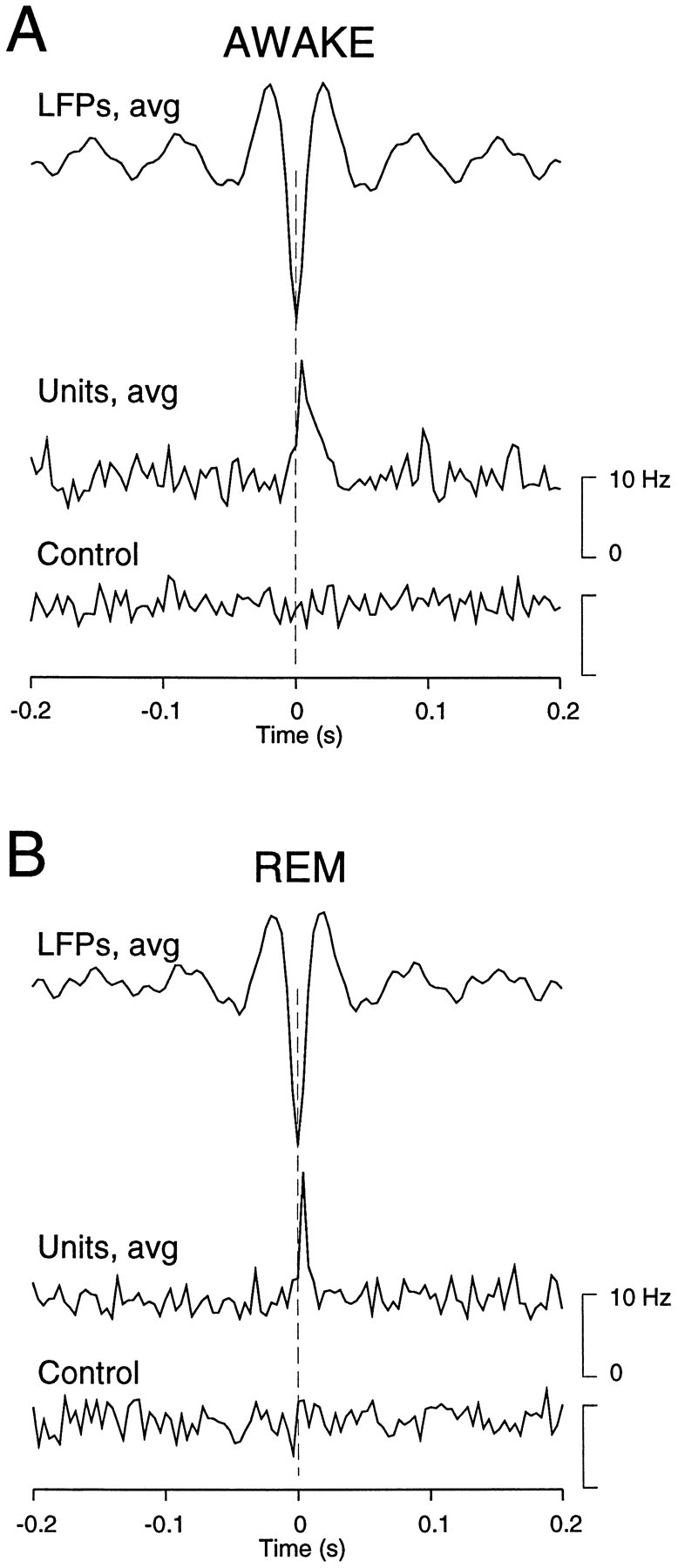Fig. 7.

Relation between simultaneously recorded multiunit discharges and field potentials during fast oscillations of wake and REM sleep. A, Relation between local field potentials (LFPs, avg) and multiunit discharges (Units, avg) in periods of wake. Signals were filtered between 15 and 75 Hz, and the peak negativities of field potentials were detected. The LFP waveform shown was obtained by averaging over a total of 467 detected events from eight electrodes. The corresponding wave-triggered average of multiunit discharges displayed a marked increase of firing correlated with the LFP negativity. The same analysis performed on randomly shuffled spikes did not show any pattern (Control). B, Same analysis during periods of REM sleep in the same animal. In this analysis, 1721 detected events were used to compute the averaged LFP. During REM sleep, similar to wake states, cells tended to fire in relation with the negativity of the field potentials during fast oscillations, whereas no increase of firing was seen in the control. Data in A and B are from the same animal.
